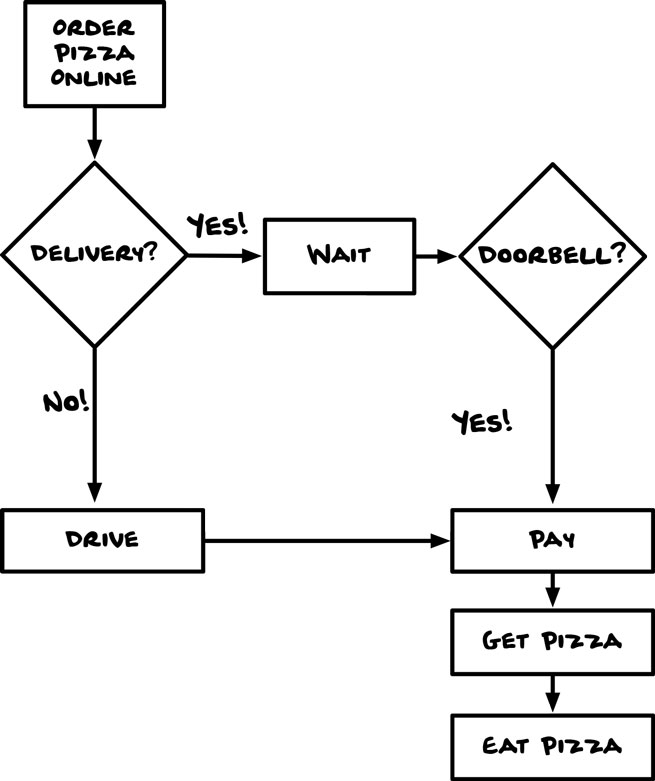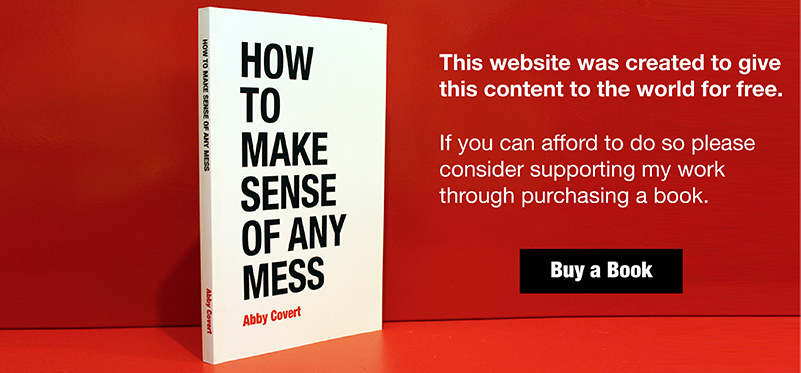Path (noun.)
Definition: A course of action.
Also referenced as: Paths (noun)
Chapter 3: Face Reality | Page 61
Rhetoric matters.
Rhetoric is communication designed to have a persuasive effect on its audience.
Here are some common rhetorical reasons for making diagrams and maps:
- Reflection: Point to a future problem (e.g., a map of a local landfill’s size in the past, present, and projected future).
- Options: Show something as it could be (e.g., a diagram showing paths a user could take to set up an application).
- Improvements: Show something as it should be (e.g., a diagram pointing out opportunities found during user research).
- Identification: Show something as it once was or is today (e.g., a map of your neighborhood).
- Plan: Show something as it will be (e.g., a map of your neighborhood with bike lanes).
Chapter 3: Face Reality | Page 67
2. Flow Diagram
A flow diagram outlines the steps in a process, including conditions a user or system is under, and connections between tasks.
Conditions are rules that dictate the flow. For example, the path I take in the flow is different if I’m ordering for pickup or delivery.

Chapter 4: Choose a Direction | Page 87
There are spaces between the places we make.
When you’re cleaning up a big mess, assess the spaces between places as well as the places themselves.
A place is a space designated for a specific purpose.
For example, if you built a public park, you might make a path to walk on, a picnic area, a playground, some bathrooms, and a soccer field. These areas were made with tasks in mind.
If parkgoers wear down a path through your fresh laid grass, you as the parkitect (ha!) could see it as an annoyance. Or you could see it as a space between places and pave over it so people can get where they want to go without walking through the mud.
A space is an open, free, or unoccupied area.
Space may not have a designated purpose yet, but that doesn’t stop users from going there.
No matter what you’re making, your users will find spaces between places. They bring their own context and channels with them, and they show you where you should go next. Find areas in flux and shine a light on them.
Chapter 6: Play with Structure | Page 139
Taxonomies can be sequential.
Sequence is the order in which something is experienced. Some sequences happen in a logical order, where the steps are outlined ahead of time.
Other sequences are more complex with alternative paths and variations based on the circumstances, preferences, or choices of the user or the system.
These are all examples of sequences:
- A software installation wizard
- New patient sign-up forms
- A refund process at a retail store
- A job application
- A recipe
- A fiction book
- The checkout process on a website
Like any taxonomy, the categories and labels you choose affect how clear a sequence is to use.
